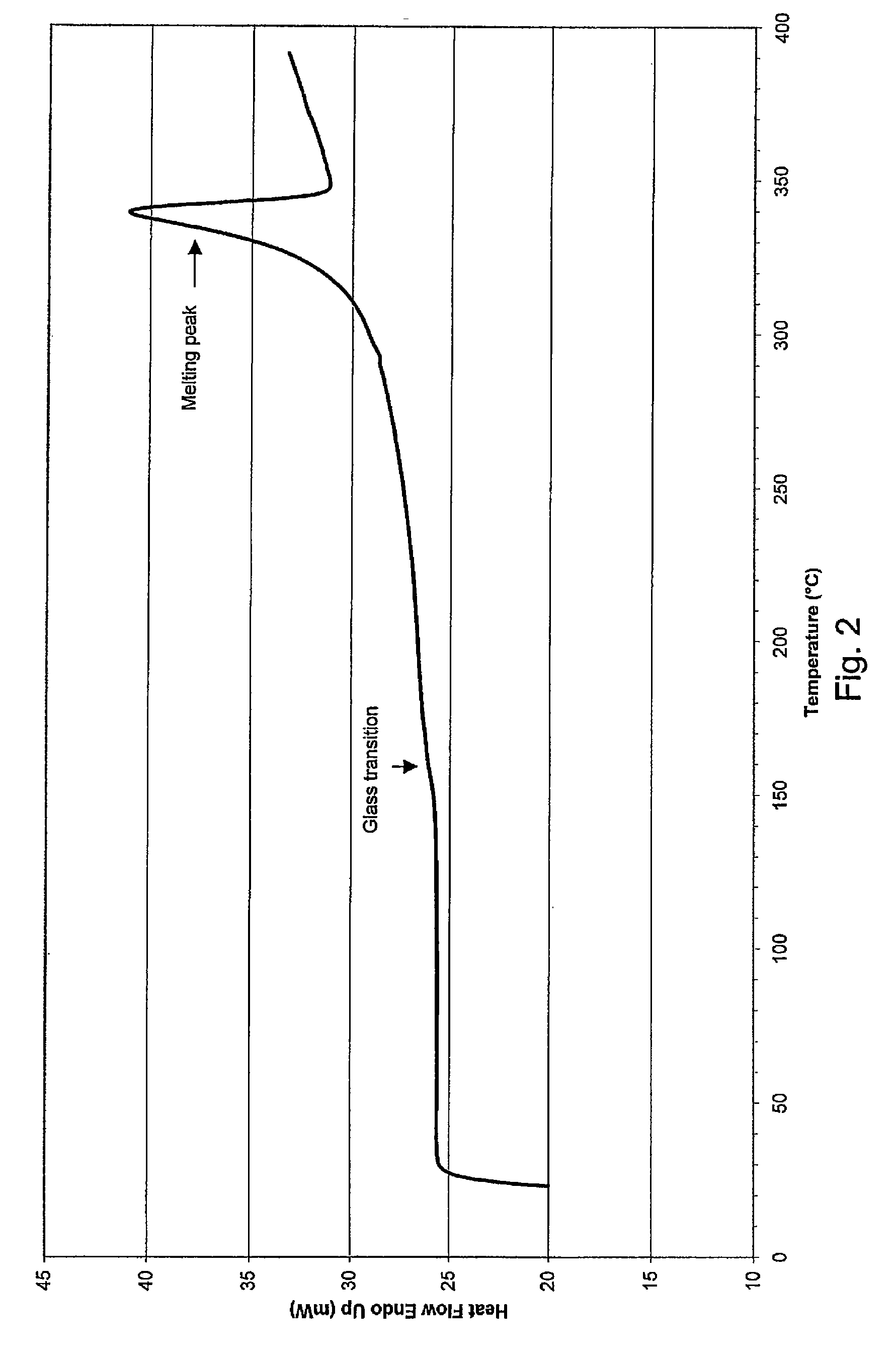Surgical implant and manufacturing method
a manufacturing method and implant technology, applied in the field of surgical implants, can solve the problems of difficult, sometimes even impossible, to adequately gain tissue information, and difficult to shape in situ into the required shape, and achieve the effect of higher elongation at break
- Summary
- Abstract
- Description
- Claims
- Application Information
AI Technical Summary
Benefits of technology
Problems solved by technology
Method used
Image
Examples
example 1
[0044] Regular sized dog-bone shaped tensile test specimens were produced using conventional injection moulding techniques. The length of the specimens were 100 mm, thickness 1.2 mm and width 10.5 mm. Pellets of PEEK-OPTIMA® LT1 and PEEK-OPTIMA® LT3 polymers were obtained from Invibio Ltd, of Thornton Cleveleys, England. Prior to injection moulding, the raw materials were dried at 120° C. for 10 hours to remove residual moisture.
[0045] The test specimens were moulded with a generally known Kraus-Maffei KM50C2 electro-hydraulic injection moulding machine. Barrel temperatures were between 355 and 375° C. for both PEEK-OPTIMA® LT1 and PEEK-OPTIMA® LT3 materials.
[0046] Mould temperature was 55° C. for PEEK-OPTIMA® LT1 material and 40° C. for the more easily flowing PEEK-OPTIMA® LT3 material. In other words, the mould temperature was substantially lower than the glass transition temperature Tg of the material to be processed. This resulted in rapid cooling and solidification of the mat...
example 2
[0065] The plate 1 according to FIG. 3 was made from the material PEEK-OPTIMA® LT3 by first injection moulding the entire amorphous semi-finished product in the shape of plate 1 by using the manufacturing parameters and injection moulding devices presented in Example 1. Thus, the temperature of the mould was so low that PEEK hardened in an amorphous state.
[0066] Next, the amorphous semi-finished product, removed from the mould, was adapted into a heat treatment device comprising heating heads to be heated to a high temperature. Each heating head comprised a contact surface shaped in the shape of the part of the semi-finished product to be heated with said heating head. The heating heads were manufactured from an electrically conductive metal, the heating itself being implemented with electric resistances. The heating heads were pushed against the sites of the semi-finished product to be crystallized and hold in this position approximately 10 to 30 sec. In this case, the sites to be...
example 3
[0072] The cable tie according to FIG. 6, or any other implant having a shape comprising parts / sections having substantially different cooling rates, for example a fixation plate having thick sections of material around the fixing holes, can be manufactured for instance by injection moulding in such a manner that PAEK is injected into an isothermal mould. Since the ratio of the outer area of the lock 9 to its volume is substantially larger than the corresponding ratio in the band 10, the material constituting the lock 9 cools substantially slower than the material constituting the band 10. For this reason, the material constituting the lock 9 has more time to orientate into a crystalline state, as a result of which the lock 9 of the cable tie, cooled to room temperature, is composed of crystalline PAEK. In contrast, the band 10 cools very rapidly, owing to which the band 10 of the cable tie, cooled to room temperature, is composed of amorphous PAEK.
[0073] The cable tie according to...
PUM
| Property | Measurement | Unit |
|---|---|---|
| degree of crystallinity | aaaaa | aaaaa |
| degree of crystallinity | aaaaa | aaaaa |
| degree of crystallinity | aaaaa | aaaaa |
Abstract
Description
Claims
Application Information
 Login to View More
Login to View More - R&D
- Intellectual Property
- Life Sciences
- Materials
- Tech Scout
- Unparalleled Data Quality
- Higher Quality Content
- 60% Fewer Hallucinations
Browse by: Latest US Patents, China's latest patents, Technical Efficacy Thesaurus, Application Domain, Technology Topic, Popular Technical Reports.
© 2025 PatSnap. All rights reserved.Legal|Privacy policy|Modern Slavery Act Transparency Statement|Sitemap|About US| Contact US: help@patsnap.com



